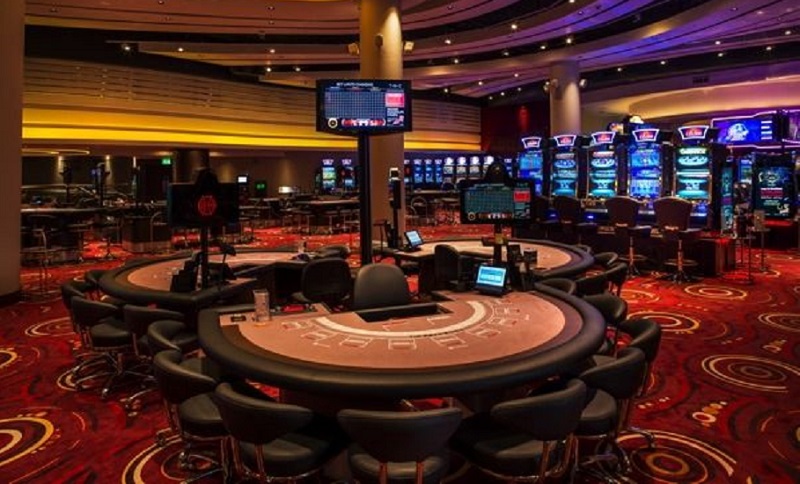
In the lively and exciting world of casinos, wherein fortune and strategy intertwine, color and design play a critical role in drawing in gamblers. From the moment players step inside a casino or access a gaming platform, they are enveloped in a visual feast that captures their attention and lures them to discover further. Bright colors, captivating graphics, and creative layouts are carefully crafted to create an atmosphere of thrill and anticipation, ultimately improving the gaming encounter.
While gamblers move through the dynamic landscape of casino games, they encounter a range of designs that not only serve aesthetic purposes but also influence feelings and decision-making. Colors like red and yellow symbolize wealth and fortune, while calm blues and greens can create a much tranquil environment. Grasping how these elements function together allows casinos to create an inviting and stimulating atmosphere that encourages players to engage with the games, spend additional time at the tables, and boost their overall enjoyment. bakar69
The Science of Color in Gaming Establishments
Color plays a crucial role in the creation of gambling games, affecting players’ emotional states and actions. Vivid and vibrant shades, such as scarlet and gold, are often used to incite enthusiasm and draw notice. These shades create a sense of immediacy and dynamism, encouraging players to engage more enthusiastically with the experience. By strategically selecting colors, designers aim to inspire feelings of pleasure and expectation, which can enhance the complete gaming experience.
Various shades also have psychological associations that can impact how participants perceive their chances of winning. For case, emerald is frequently associated with luck and abundance, making it a popular choice in games like roulette and poker setups. This link can lead players to feel more hopeful and assured in their gameplay, ultimately inspiring them to stake more. Grasping these connections allows game creators to design environments that enhance player enjoyment and loyalty.
Furthermore, the interface of casino game interfaces often uses color gradients and opposing colors to direct players’ responses. For case, successful outcomes may be highlighted with bright, differing shades, creating a visual cue. This approach supports favorable outcomes and encourages repeated gameplay. By leveraging the psychology of color, gambling establishments can design games that not only attract players but also maintain them involved and invested in their play experience.
Creative Elements that Engage Gamers
The visual appeal of casino games is largely influenced by the implementation of bold colors. Lively and striking colors are strategically chosen to create an appealing atmosphere that grabs attention. For example, reds and golden hues often signify good fortune and wealth, which is why they are prevalent in the color schemes of slot machines and table surfaces. These colors not only attract players in, but they also evoke emotions associated with thrill and anticipation, enhancing the total gaming experience.
In parallel to color, the aesthetic and organization of gambling games play a crucial role in captivating players. Games are designed to be intuitive, ensuring that players can easily understand the guidelines and gameplay. Accessible interfaces, along with engaging graphics and motion, help maintain gamer interest and encourage longer play sessions. The physical elements, such as the feel of the controls and the sounds of the games, also contribute to a holistic sensory experience that keeps players immersed.
Finally, thematic elements in gaming design can greatly influence player choice. Many gambling games are inspired by media, fairy tales, or adventure themes, incorporating symbols and characters that resonate with players. These themes create a sense of immersion and connection, making each game feel unique. When players feel a connection to the theme, they are more likely to opt for that game over others, leading to higher participation and excitement within the casino environment.
Case Studies: Notable Gambling Game Designs
One prime example of effective casino game design is the well-known slot machine series themed around blockbuster movies. Games such as those based on the Wizard of Oz and Game of thrones utilize dynamic colors and high-quality graphics to enthrall players in familiar narratives. The application of moving visuals and captivating sound effects takes the attention of players, creating an psychological connection to the theme. This approach merely promotes longer play but also improves the overall gaming experience, resulting in increased player retention.
Another notable case is the application of the psychology of color in table games like blackjack and roulette. Casinos often develop these games with deep reds and greens, colors traditionally associated with luck and wealth. For instance, the emerald felt on a blackjack table provides a calming effect, while the crimson accents in the wheel invite anticipation. This deliberate use of color helps to create an inviting atmosphere that encourages players to engage, satisfying their psychological impulses and enhancing their enjoyment.
Finally, social casino games that incorporate community features and vivid, lively designs have seen remarkable success in engaging players. Games like Zynga Poker and Slotomania leverage bright colors and playful animations to create an inviting online environment. The addition of leaderboards, community sharing options, and in-game rewards encourages competition and community, drawing players in for longer sessions. Such designs not only make the games visually attractive but also underscore social interaction, a vital factor in player retention and engagement within digital casino environments.
